The Royal Air Force has taken delivery of its 20th A400M Atlas transport aircraft.
Secretary of State for Defence Gavin Williamson announced the arrival today at a gala dinner at the Royal International Air Tattoo.
Secretary of State for Defence Gavin Williamson said:
“From deploying troops to transporting armoured vehicles, the Atlas aircraft has played a global role in operations in the Middle East against Daesh and providing vital relief in the Caribbean. As we come closer to receiving the full fleet of aircraft, we can be proud of the role the Atlas has played in supporting the RAF lift-off into a new century of air power.”
The newly-delivered aircraft has formally entered service with the RAF, ready to begin crew training ahead of operational deployment. The international Atlas programme, being delivered by Airbus, is supporting around 8,000 jobs in the UK. In total the UK has ordered 22 Atlas aircraft which are all expected to be delivered to the RAF by the early 2020s.
Adrian Baguley, Director Air Support for Defence Equipment and Support, the MOD’s procurement organisation, said:
“The DE&S Atlas delivery team, based at MOD Abbey Wood and Brize Norton, is proud to be delivering the Atlas aircraft for the RAF which means the UK has a world-leading tactical and strategic airlift capability. We will continue to work hand-in-hand with Airbus and trials personnel to ensure that this fleet of world-leading aircraft is fully delivered and qualified for UK operations.”
The cargo delivery trial, carried out by a UK aircraft crewed by Air Warfare Centre and QinetiQ personnel, involved containers weighing around one tonne in weight being dropped in sequence over Salisbury Plain.
For the pictured air-to-air refuelling trial, which took place near Seville in Spain, an Airbus-owned Atlas, operated by a joint crew including Airbus and UK personnel, received fuel from an RAF Voyager tanker aircraft over a wide range of altitudes and air speeds. The results from both trials are now being analysed with a view to delivering operational clearances.


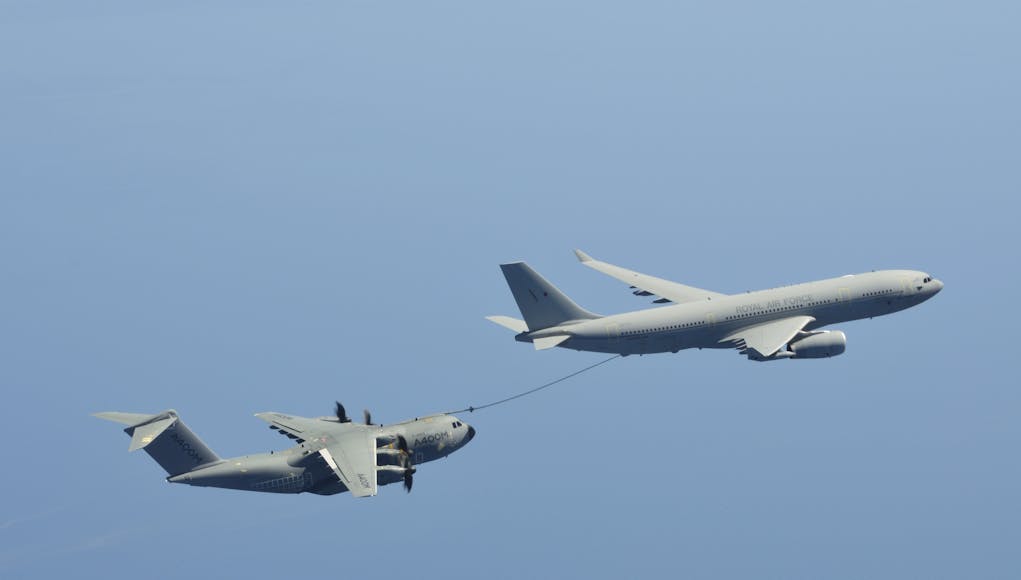
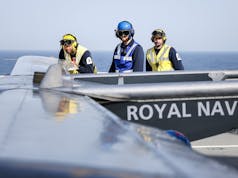
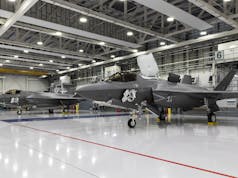
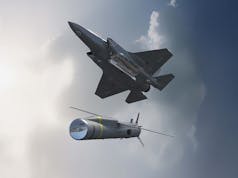

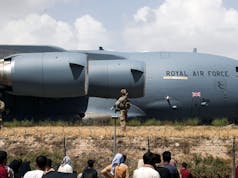

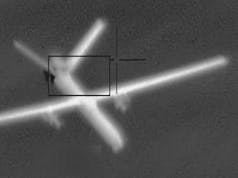
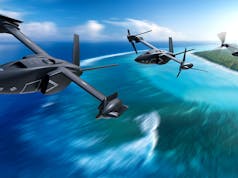
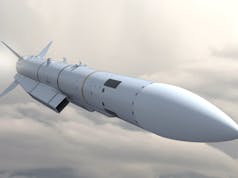
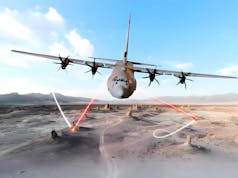

Why are we getting these so rapidly and P8 so slowly?
We ordered them a lot earlier, have been ramping up to receive them for a lot longer and have our own production slots that we chose as a launch customer. For P-8, among a number of other issues, we’ve had to slot in between USN production slots and the ramping up of our base support and training infrastructure has taken longer. Money might be an issue as well?
Ok makes sense Richard. I’ve seen lots if moans here that we would not get our complement til tgw late 2020s.
Difference between crew training for a transport and a MPA. In 2010 the government, i.e., George Osborne, literally destroyed 4-5 near operational Nimrods. So no one was trained in MPA operations, while the RAF had plenty of transport crew.
Absolutely right.
h legend of the Nimrod lives on. Sorry David ,but the whole programme was a shambles. When it was cancelled the project had cost £3.8 billion, eight hundred million over budget and no end in sight.
The ‘plane was nine years behind schedule and the original 21 air frames had been reduced to nine, partly due to cost but also because of fatigue problems discovered during restructuring.
At the time of cancellation there were several hundred design non compliances with an estimated two to three years more work, and money, before any air frame became operational.
GR – you are incorrect. This is information from the Avro Museum’s archive manager on the state of the Nimrod programme before its vandalisation by Osborne:-
“The first 5 Mk.4s had all flown and were virtually complete, but none had been delivered. Set 6 had been engine running, soon to fly, and Set 7 had had systems and pressure tests, all before the axe fell”
By cancelling a programme that was about to deliver Osborne wasted all that money and left a huge gap in capability which will be filled, in a few years time, by Boeing aircraft – all to make an ideological point.
All very well but they were uncertifiable.If it had been based on the A320 it would have been a major export success.Also notice that we didn’t buy anything else instead, owing to a lack of cash.
‘All very well but they were uncertifiable’
I’ll look into that.
‘we didn’t buy anything else instead, owing to a lack of cash’
Nope – it was because the tories were making an ideological point.
I can’t see how uncertifiable MRA4 aircraft were able to fly to Elgin AFB in Florida and Istres in France for tests if they were unsafe. PA02 and PA03 had completed at least 290 flights and PA04 and PA05 had flown by the time the programme was cancelled. This report puts a lot of the myths to rest and exposes what HF says above – it was essentially a politically-driven decision. https://publications.parliament.uk/pa/cm201012/cmselect/cmdfence/761/761vw15.htm. Chapter 3 “In Defence of the Nimrod MRA4” is particularly relevant.
Sorry HF but I beg to differ At best only two production models had been completed and they were riddled with faults . It was actually Labour in 2009 who delayed delivery until 2012 and at that stage the aircraft were being costed at £400 million each. When the coalition came to power in 2010 estimates ranged from three to five years for service entry with a potential additional cost of £1 to £1.2 billion.
So for almost the cost of two aircraft carriers we could have had nine Nimrods with thirty years plus airframes!
These are facts from the the Avro archive so I’m afraid you can’t dismiss them in such a way.
This report, referenced above, nails the myths:-
https://publications.parliament.uk/pa/cm201012/cmselect/cmdfence/761/761vw15.htm
the problem is even with another £1b and they would have been cheaper than throwing away the existing investment and buy the p8 would would probably be in service for a decade by the time the p8 start arriving. It was a stupid decision however you look at it but what has happened has happened.
Plus of course, the later increment 3 P-8s are more capable than the earlier inc 1 & 2 P-8s, so it is wiser to wait & get more of the later ones. Also spreads out the cost.
It is way too late now, but I still think that if Nimrod MRA4 had been a complete new build rather than a half new, half old bodge up, it would have been in service years earlier & even picked up a few export orders. Will the idiot who decided to re-use old fuselages ever be named & shamed?
Agree with this.
Agree….maybe the idiot is still in hiding John, hopefully never to go near another UK project.
It’s even the fact they realised immediately how much they screwed up when the airframes had different specs they laboured on for years rather than going back to the drawing board. Total f’ing disgrace and the people responsible should be locked up for embezzlement.
The issue is one of accountability, which is insanely difficult to place on one person with large projects.
In the private sector, when something like this the CEO resigns, simply because the buck stops there.
In the public sector, who is the CEO role? You could argue the defense minister, but they have the ready made excuse of blaming their predecessor, who has already left office and so can’t resign, who would in any case blame their predecessor or the current minister.
You could blame someone in the civil service, but no one really understands how it works and this cloud of complexity is what they have always hidden behind to avoid accountability for anything.
Do you blame BAe? I suspect they would argue they told the government of the issues and the decision was to continue rather than spend more in the short term to fix the fundamental issue and/or accept publically they had messed up, ala type 45.
Then there is the public enquires into what went wrong, which seem to be fixed to ensure that the finger is not pointed at any minister, simple because they are worried that in future one could be used against them and so the silent decision seems to be that it is too complex to place blame, so ensuring no one opens their skeleton case and comes out fighting.
This is always the case with public sector projects, no one is to blame and so the same mistakes just keep happening.
p.s. in the private sector once the new CEO comes in, they replace their entire senior staff because they were probably all involved in the bad decision, something you just can’t do with the civil servants due to their jobs for life protection.
I think the biggest issue was not using old air frames but was the constant major specification changes. As far as I know they had to redesign the aircraft numerous times even after starting build work! You can not do that and expect the costs to not go through the roof.
HF..I.m not dismissing anything> I am reporting the facts as reported to the public accounts committee and parliament. Your link was a submission from one person, albeit a very learned one. As I am also a contributor you might as well believe me!!!
Seriously, though what’s dead is dead and at least we’re both on here fighting for what we believe in.
‘we’re both on here fighting for what we believe in’
I just hope someone is listening ! 🙂
As I understand it the safty faults on the Nimrod where so many and serious that BAE systems were not prepared to give a fixed price quote to resolve them.
It was stated by some RAF personnel that in certain flying scenarios the MRA4 was not a safe aircraft.
Add in the very large support costs to maintain a bespoke aircraft, then you have a very costly problem.
The original contract was for around 20 aircraft costing £2bn, by 2010 it was 9 aircraft costing £4bn plus an unknown amount to try and fix outstanding issues plus those issues may not have been able to be fixed.
Problems with MRA4 first surfaced in 2001 when the new wings could not be fitted to the old fuselages, from then.on it only got worse.
The project should have been cancelled in 2005 at the latest, but politics prevented this as the Labour government didn’t want the negative press.
In 2005 we could have cancelled MRA4 and ordered P8.
In addition to the £4bn it cost the UK government, BAE also had to hit of £800m on the profit and loss account for its failure to meet contractual terms.
One final point, I did read at the time of cancellation that the flying cost per hour of a MRA4 would have been to 2 to 3 times higher than the P8.
Of course the P8 benefits from being part of the Boeing 737 which has a production run of 10000 aircraft and parts are readily available, whilst the Nimrod was part of the Comet family of which only around 100 where built. Spares would have been bespoke and made to order therefore expensive.
Beautifully put Mike. I have mentioned this before, in one of our regular MR4 bemoaning sessions.
I happened to do some work for a former BAE Systems engineer who had been involved in and off with the program from the outset.
One of the things he shared with me, was that it was put to BAE Systems management at the very start to bring in some of the long retired Nimrod MR2 engineering staff on consultancy basis, to advise on the practically of the rebuild.
They said No. Had they done this, the problems that later became apparent, would have been pointed out straight away and probably placed an early halt on proceedings.
Had history been different and the MR4 gone into service, the issues keeping such a small bespoke fleet in the air would have been extremely expensive.
Also, we would now be facing a looming upgrade in the next 5 years to counter obsolescence. This work would have cost another fortune.
It would have been a tremendous asset though, with its Lancaster sized bomb bay!
It would have excelled at Long range overland persistant strike. It would have made the perfect ISIS mallet, loaded with LGB’s!
Had all 21 originally ordered been built and all new build ( instead of trying to put lipstick on a pig) they might have just pulled it off and perhaps picked up a few orders.
Obviously though and back in the real world, cancellation should have occurred much earlier, circa 2003.
Please don’t knock the ‘Growler’. It is a fantastic aircraft. Far superior to the C-130 in ANY guise!
Sorry ‘Grizly’